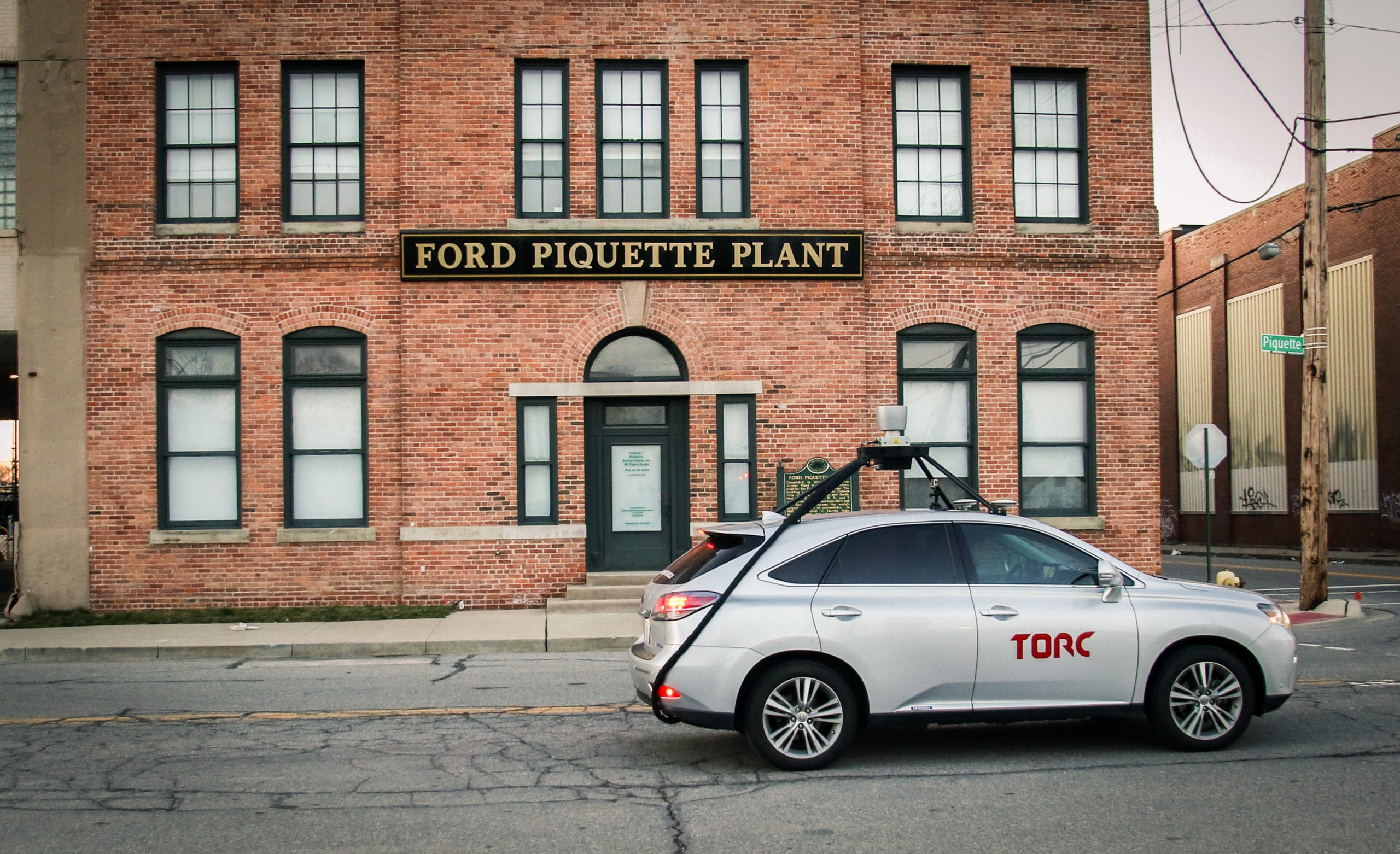This article was originally written in 2017, when Torc Robotics’ self-driving mission was geared towards autonomous cars. Since 2019 and our subsequent partnership with Daimler Truck, Torc has shifted towards self-driving semi-trucks and a freight focused outlook. To learn more about our long haul journey, visit our trucking page.
A Round Trip in Torc’s Self-Driving Car
In April, 2017, Torc’s self-driving car rolled into the Ford Piquet Avenue Plant. Amidst the setting sun and the empty sidewalks, the car parked itself alongside the building’s entrance. On top of the car, the LiDAR sensor span, quietly awaiting its next command.
Suddenly, a cheer broke out. Technicians and engineers spilled out into the street around the car, eager to celebrate this incredible driverless car’s milestone.
This autonomous arrival was the completion of the first day of a round trip planned for Torc’s self-driving cars. This route from Blacksburg, Virginia, to Detroit, Michigan was supervised by a team of highly trained autonomous vehicle engineers. Throughout the 1,023 mile journey, the Torc car performed well the whole time. The vehicle went down the winding roads of West Virginia in the rain, navigated the heavy traffic of Ohio’s multi-lane highways, and coasted through Michigan’s bumpy, jagged pavement.
As a team of technicians and engineers gathered around the newly arrived autonomous car, a great new journey had begun.
The Sensors Behind Our Self-Driving Journey
Throughout the road trip, the car’s numerous cameras and large LiDAR sensors mounted on its roof sparked numerous conversations with passersby and observers along the route. One of the most frequently asked questions was whether Torc was a storm-chasing team. Some individuals who approached the car simply repeated the words emblazoned on its side. “Torc. Self-driving,” they would say as a greeting, prompting the engineering team for an explanation.
At a rest stop in West Virginia, a woman leaned out of the window of a big brown RV and filmed the team cleaning the rain off the GoPro cameras that were set up to record the trip. In Ohio, a car full of teenagers drove by the car. Each of them held a phone in one hand and waved wildly with the other.
Arriving in Detroit
The few people who passed the camera and sensor-equipped car on Piquette Street in Detroit stopped to ask what it was doing. The team responded that it had driven there to showcase Torc’s autonomous vehicle technology. The trip paid tribute to the city that sparked the American automotive revolution.
The Ford Piquette Plant destination was not chosen as a random destination. Torc co-founder Michael Fleming shared that he chose the plant for its historical significance. “We chose the birthplace of the Model T as our destination because it signifies the beginning of the transportation revolution,” he said in an interview. “Self-driving vehicles are the next revolution; they have the potential to improve the lives of everyone.”
The Journey Home
On April 2nd, the Torc team traveled back to Virginia, this time piloting the Torc car with their own two hands. Despite arriving on Sunday evening, they were greeted by a large group of Torc employees when they pulled into the company garage. They immediately gathered to discuss trip data, improvements, and a plan to improve the technology. On Monday morning, the car was back on the road, ready to test out the lessons learned from this first long autonomous trip.
Torc’s Self-Driving Car Project Background
Ten years ago, Torc Robotics (TORC®) and Virginia Tech developed a self-driving car. It came in third place in the DARPA Urban Challenge after crossing the finish line. Since then, the company has grown by leaps and bounds and made autonomous vehicle solutions for the mining, defense, construction, agriculture, and auto industries. In 2016, founder Michael Fleming gave his team a new task: make a system that gives consumer vehicles full autonomy. The auto industry was ready, he said; it was time to show what a decade of progress with a winning team looked like. Torc entered the roster of self-driving car companies by developing two driverless vehicles to demonstrate a system built on ten years of multidisciplinary engineering progress. Each vehicle carried an end-to-end software stack that the Torc team honed for this automotive challenge.

